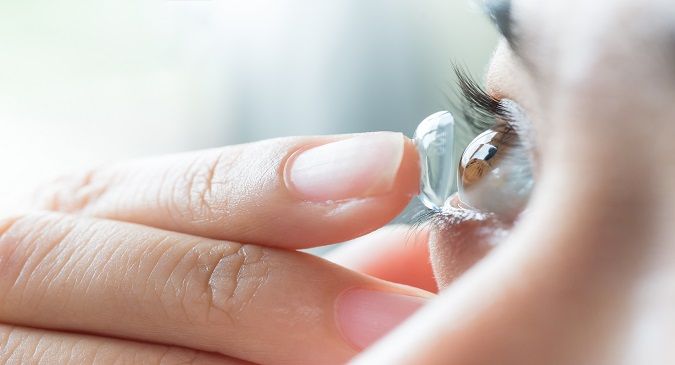What if I told you that Contact Lenses Can Treat Diabetes? You would probably easily dismiss the concept if you’re a contact lens wearer or someone with diabetes. Given how odd the idea seems, it’s real now. Recently, researchers have developed the Contact Lenses That Can Treat Diabetes.
Before you start celebrating, wait. It’s new and preliminary; it’s not yet open to the public at large. This’ smart contact lens’ technology was successfully developed by researchers at Pohang University of Science and Technology (POSTECH). They are, still, planning clinical trials soon. For a bit, you may not be able to get a pair of these contact lenses. Yet it is incredibly promising that these researchers have had success with this crazy theory.
DETAILS OF THE RESEARCH
The discovery and production of soft bioelectronics for use in the health care industry has seen a recent explosion. In order to develop wearable fitness technology, researchers including the POSTECH team have been working to harness the polymer properties of these soft electronics. Currently, several of these projects have been active already. In areas such as electrocardiographs, pulse oximetry, photoplethysmography, and even glucose tracking, we see related technologies.
Glucose control is in reality, the foundation of this study by the POSTECH team. They also successfully created wireless smart lenses that can clearly detect and treat diabetes-diabetic retinopathy. It’s a breakthrough technology that will have a huge positive effect on diabetics.
HOW THE LENSES WORK
You’ll probably find the engineering a little confusing behind the lenses. To grasp all the terminology and processes that the team defined in their publication, you can need a background in engineering. However, the details we outlined in this essay and converted the words into more rudimentary terminology.
The lenses contain five parts:
- Remote radio frequency (RF) communication system
- An electrochemical biosensor that detects glucose levels in real-time
- On-demand flexible drug delivery system (f-DDS)
- A resonant inductive wireless energy transfer system
- Integrated circuit (IC)–based microcontroller chip with a power management unit (PMU)
REMOTELY CONTROLLING AND POWERING THE LENSES
Using the first part, the contact lenses operate through remote control. This technology for RF isn’t new. Indeed, the same features are used in modern remote controls. Applying this to lens is new.
The remote communication unit (RCU) built into the lenses only uses 2.3 mW of power. It transmits data at a rate of 445 kbits·s−1 in the 433-MHz industry-science-medical (ISM) frequency band. This is a great frequency band to use on a global scale, especially since Europe bans the 900-MHz that is allowed in the United States.
How the lenses and the RCU receive power is the fourth component, the resonant inductive wireless energy transmission device. There is a copper receiving coil installed into the lenses. There is an external power supply that has a transmitter of copper that provides power to the lenses wirelessly.
SENSING GLUCOSE LEVELS
The second component of the ocular electrochemical biosensor makes the calculation of glucose levels by tears rather than blood. The need for conventional lancets, strips, glucose meters, and finger pricks is replaced by this. Although tears are not usually used for calculating the amount of glucose, researchers have studied the feasibility of measuring these levels of tears. Glucose levels in tears have been shown to correlate closely with the levels found in the blood.
There are three electrodes in the biosensor, two made of platinum and one made of silver/silver chloride that measures the electrochemical reaction of glucose. As an adhesive film, a layer of chromium was also applied. Finally, after the original mixture having a blend of glucose oxidase (GOx), bovine serum albumin (BSA), poly (vinyl alcohol) (PVA), and chitosan was added to one of the sensors along with a coating of glutaraldehyde when dried. Diabetic rabbits were tested for this, and the findings were that the measured glucose levels in tears were as accurate as the blood levels were.
FINAL THOUGHTS ON THE RESEARCH AND DIABETIC CONTACT LENSES
With the number of people in the world suffering from diabetes, an anxiously awaiting phenomenon is the creation of lenses that can detect, control, and manage the disease. And if the lenses are for diabetic retinopathy only instead of the whole condition itself, any aid is greater than what is now available.
Diabetes, of course, is a disease that one must urgently treat. Entry to healthy eating choices and quality healthcare continues with this endeavor. Some people may not be able to help that they have diabetes. But it’s a self-inflicted disorder for certain persons. New developments like these lenses would be a valuable contribution to the world for researchers and scientists at POSTECH.





















Comments